While a scattered few flowers must satisfy the gardener in the winter months, April is glorious in its abundance. With many dozens of hellebores in the garden the slowly fading flowers remain the most obvious presence in early spring, but other flowers are now too numerous to count.
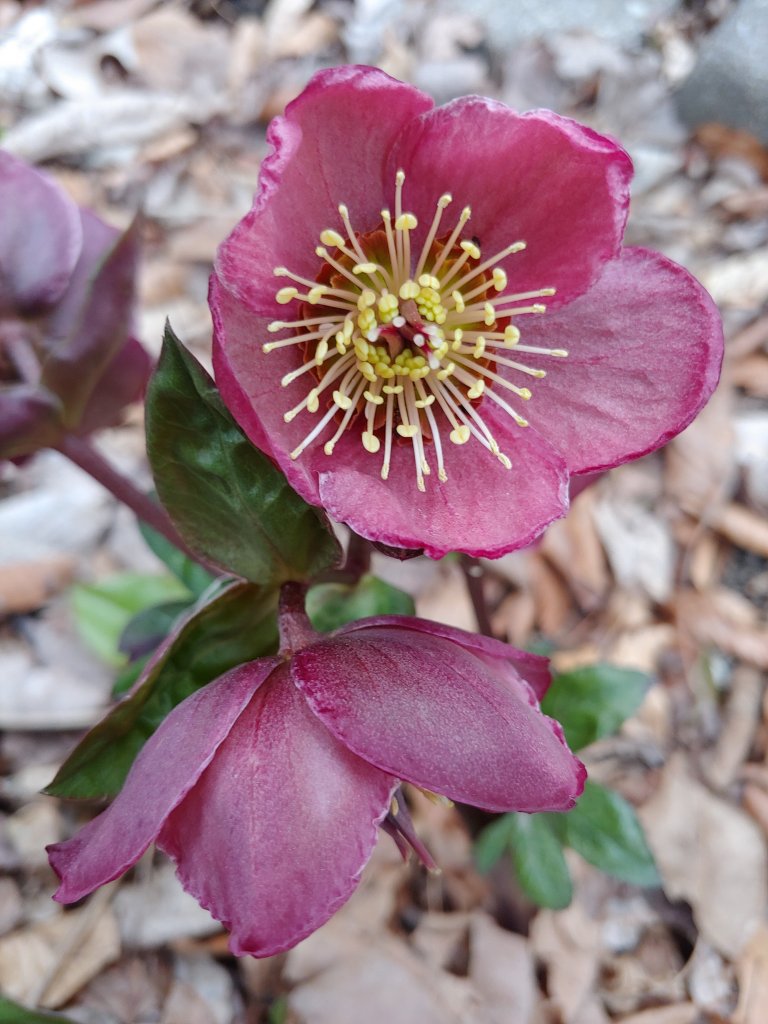
While hellebores (above) were late starting after a chilly and snow covered January, flowers remain colorful the first week of April with only a few noticeably fading. Remarkably, a few late bloomers have buds just beginning to open.
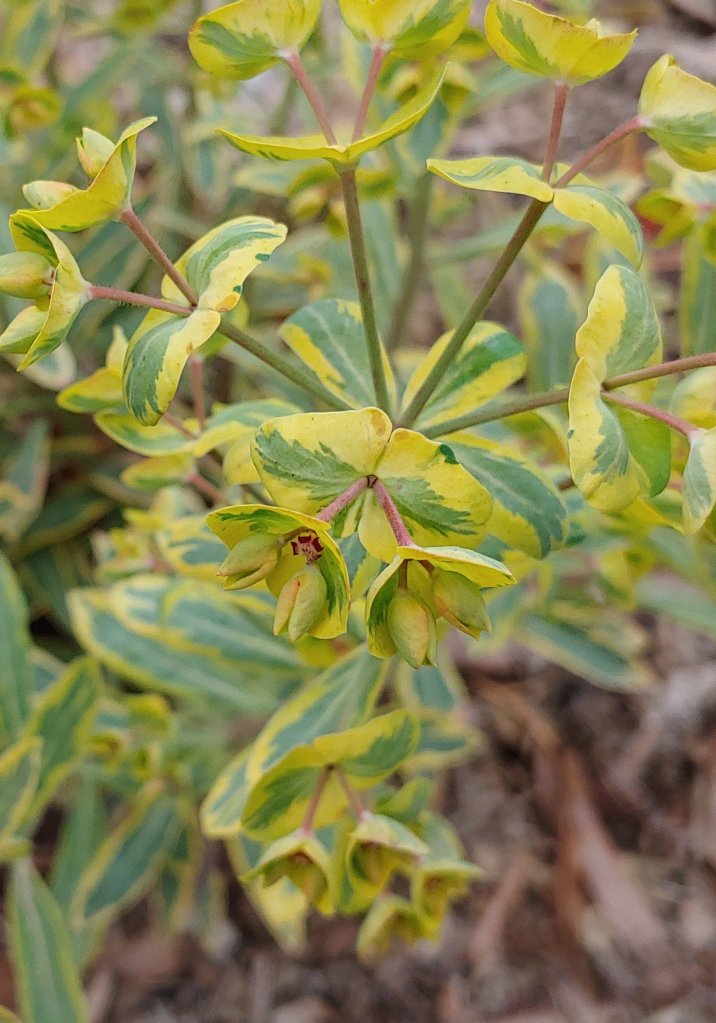
Spurges (Euphorbia x martinii ‘Ascot Rainbow’, above) demand well drained soils, a rare find in sunny areas of the damp rear garden, but I’ve managed to squeeze a few into raised beds. The yellow-green early spring flowers brighten the cloudiest April day. As often happens with a plant that catches my eye, collecting of spurges is just beginning despite the difficulty in finding suitable dry land.

Robb’s spurge (Euphorbia robbiae, below) is a rugged spreader, even in dry shade where little else will grow. Its vigor ebbs and flows in two or three year cycles, and today it seems slightly less vigorous than a year ago. Robb’s spread is easily controlled if it gets too rambunctious, but in this dry ground its vigor is greatly appreciated.
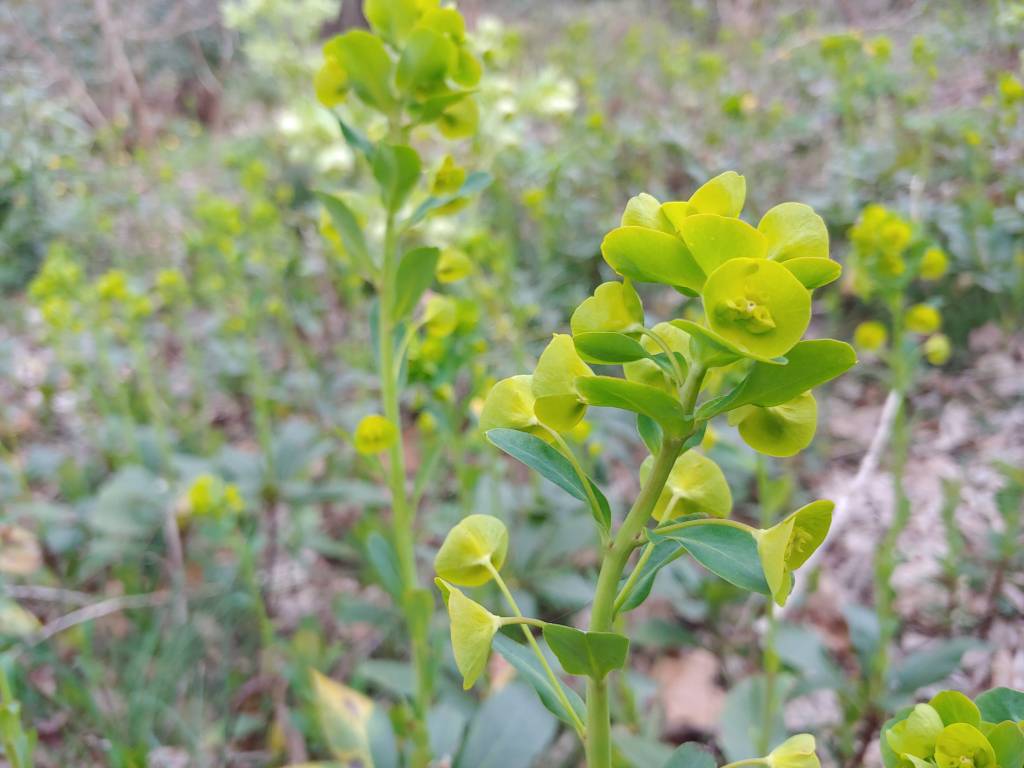
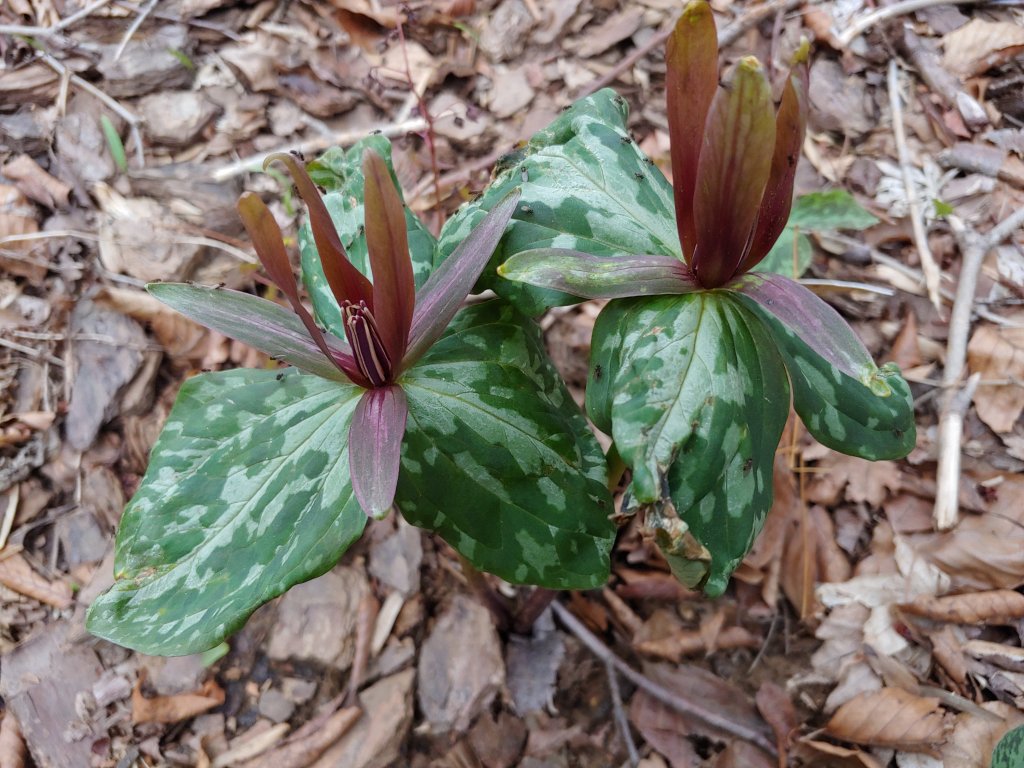
I am surprised by the number of trilliums (above and below) in the garden this year. They are slow to colonize, but some must be seedlings from ones planted years ago, and even if they don’t flower for a few more years I’m happy to see more.

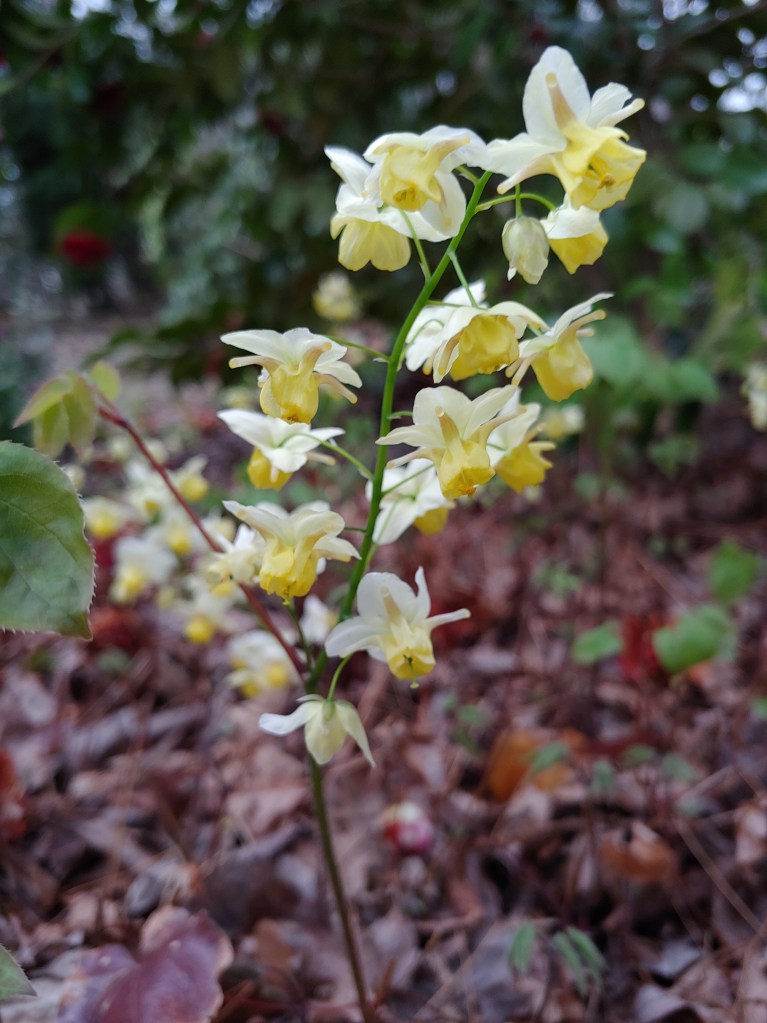
Barrenworts (Epimedium, above and below) thrive in the dry shade beneath a tall purple leafed beech and in the dry shade of the side garden. I remove the worst of browned leaves, but many get through mild winters with little browning.
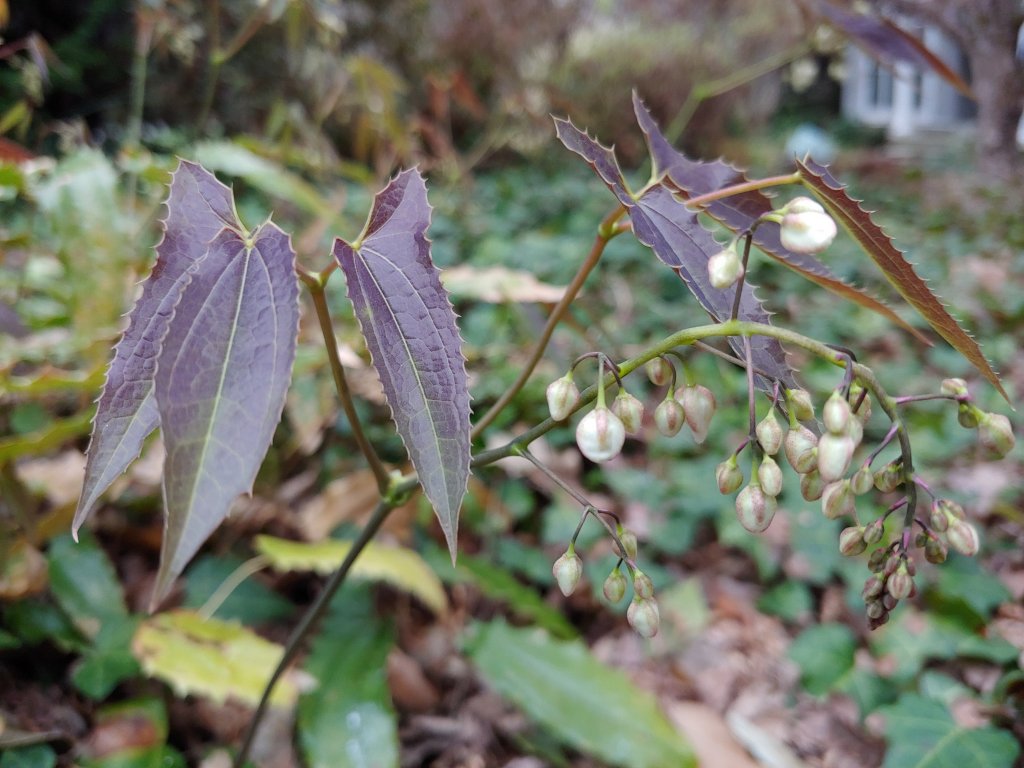
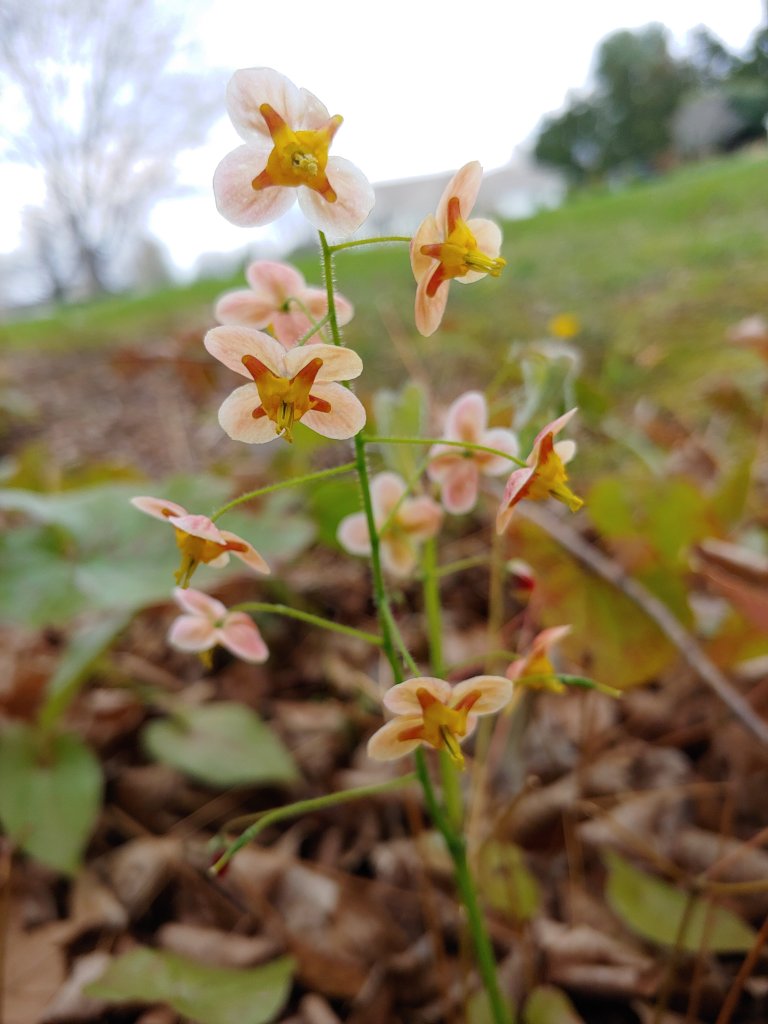

The fritillarias have spread through a thick clump of Evergold carex. I’ve dug out and transplanted snowdrops that could not rise tall enough above the sedge, but the fritillarias stand well above the winter flattened carex.
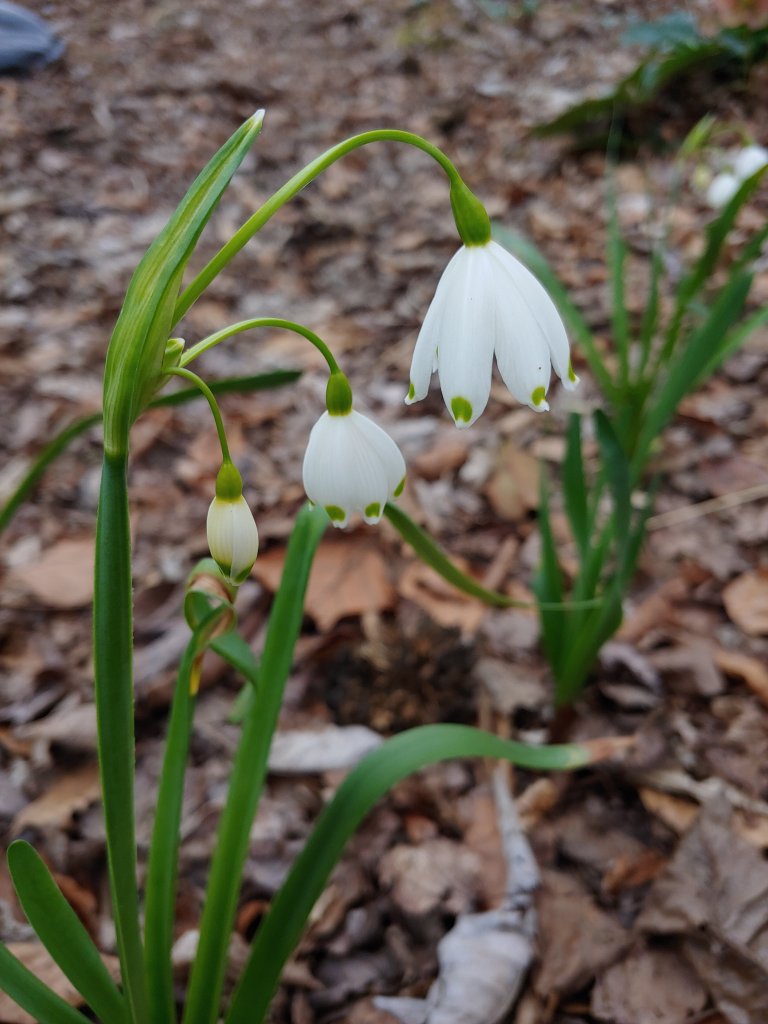
Summer snowflakes (Leucojum aestivum, above) thrive despite planting in dry ground in the deep shade beneath the Bigleaf magnolia.
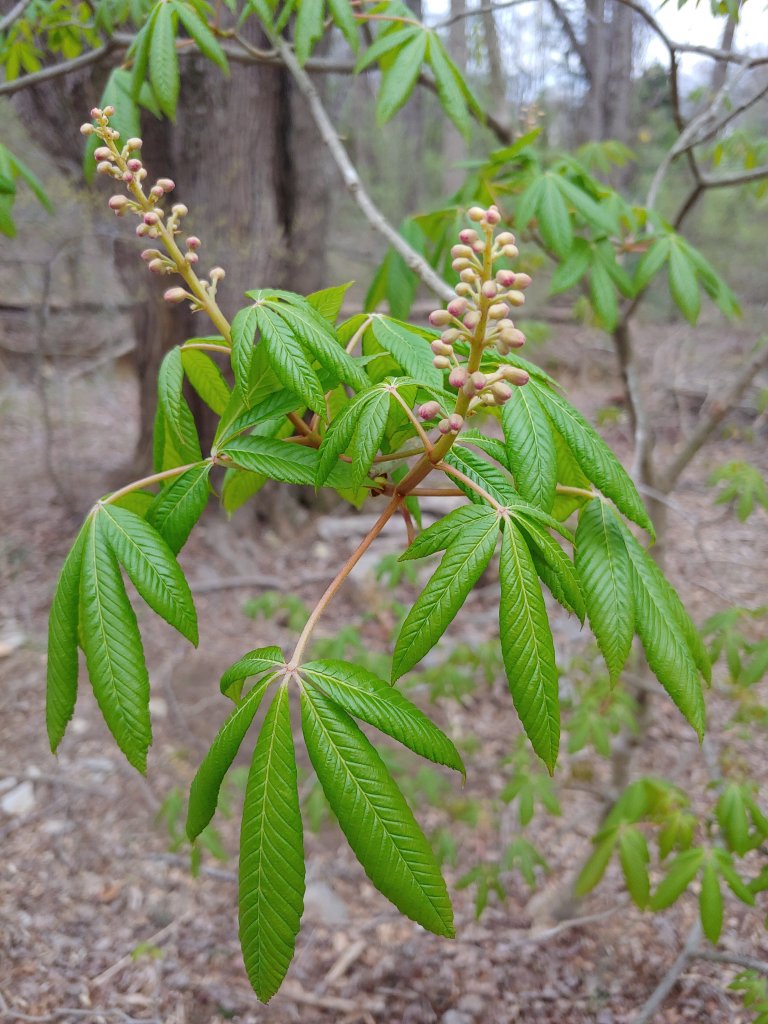
Red buckeye (Aesculus pavia, above) flowers beautifully in deep shade. As leaves and flowers develop I regularly watch its progress.
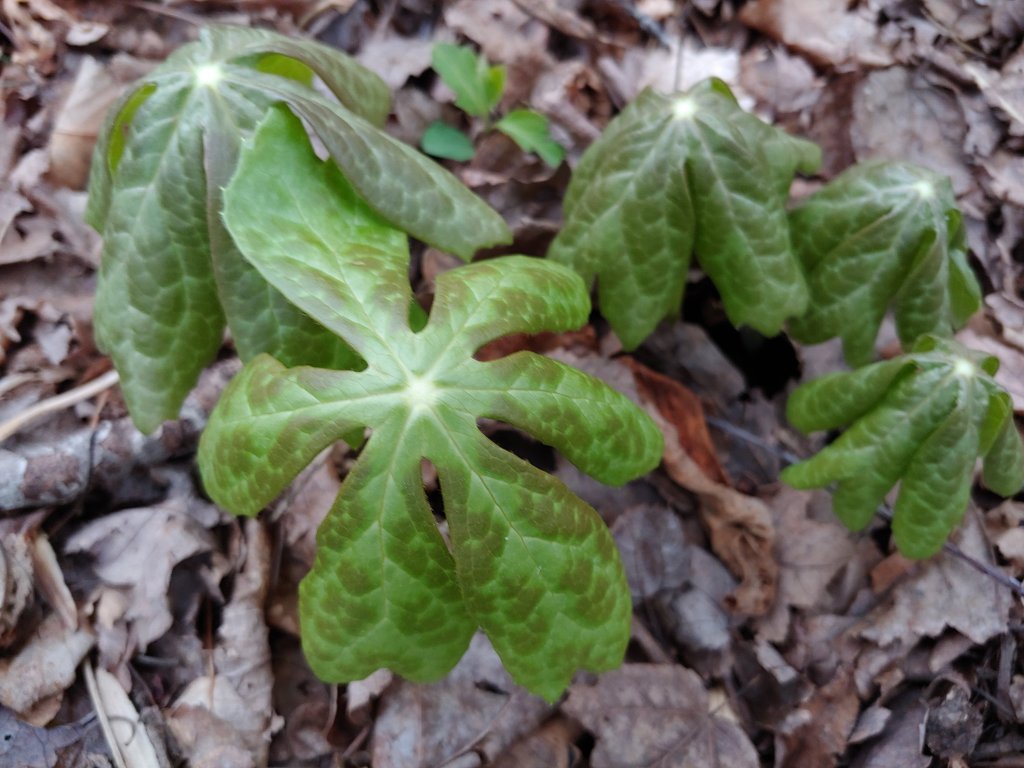
While trilliums make a more colorful show, mayapple (Podophyllum peltatum), another woodland native is a favorite for its foliage.
Except for the English horse chestnut, (which is not actually native to North American anyway,) and the native California buckeye, I have never actually met another buckeye. People seem to appreciate them within their natural ranges, which sort of makes me wonder what I am missing. Ours is not much to brag about. Although the white bloom is delightfully fragrant, the foliage gets shabby and and defoliates half way through summer, only to be replaced for autumn. The species is ‘twice deciduous’. It can look dead for late summer. It surprises me that people in other regions take an interest in it, although it may retain foliage through more humid summers.